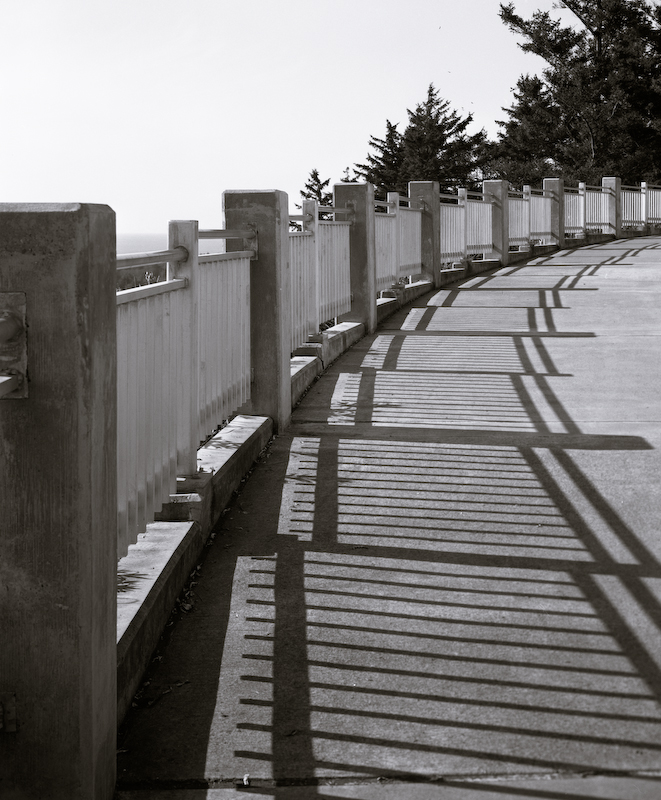 Originally posted by Todd Adamson
Originally posted by Todd Adamson 
Just finally got around to reading this, and thanks again for posting. I have a couple of things I'm wondering about, if anyone cares to comment:
1. Can someone clarify what this quote from the article means: "high-dilution Rodinal development means one tank-load and dump. There's no such thing as replenishment..."
Full strength developer has significant residual activity and can be reused one or more times by adding a volume of fresh developer or a specialized replenisher. Diluted developer, one the other hand, often has the absolute minimum amount of activity to fully develop the image. As such, you use once and dump the depleted chemicals down the drain.
 Originally posted by Todd Adamson
Originally posted by Todd Adamson 
2. More importantly, some of the results I have seen on various web sites that I really really liked were "stand developed." Generally, these protocols involved high dilutions, 1:100 and even 1:120, and called for thorough agitation for the first 30 to 60 seconds, then not touching it for the remainder of the developing time, which was very long, like 30, 60, even 90 minutes. But none of the times in this article were anywhere near that long, and it specifically admonishes that agitation is critical to avoid streaking. I was sort of contemplating these "stand" protocols as my initial foray into processing...
Stand and semi-stand development are advanced techniques that require a degree of experience to get right. As with other advanced techniques (pyro for example), you can get truly inspiring results, but there is a degree of trial and error involved. It also helps if you know what you are trying to accomplish. The goal and theory behind stand/semi-stand is to overcome the limited dynamic range of most films to capture the huge dynamic range present with many subjects. In other words, we want to retain shadow detail or possibly even "open up" shadows while avoiding blocked up highlights.
This is accomplished by using a highly dilute developer and creating a micro-environment at the emulsion surface that allows for fast developer depletion in the high density area (builds density slowly) while allowing continued slower-paced development in the low density areas. This is generally referred to as compensating development. The sequence time-wise:
- Initial standard agitation for 30-60 seconds. A significant amount of development occurs during this initial period, after which the developer is fairly depleted.
- Stand for x-minutes. This is where the micro-environment develops. In the absence of agitation, the developer is quickly depleted in the dense regions, but continues to work in the less dense areas.
- Short agitation at x-time. Helps avoid streaks and uneven development.
- Stand again for x-minutes. See above...
How well the technique works depends on the developer, the film (many films do not respond well to this technique!), and the subject on the negative. I am not an expert, but have found that the semi-stand works well for my 4x5 landscape work using Foma 100 (Arista.EDU Ultra 100) and HC-110 at high dilution. (HC-110 is generally not even recommended with this film at the standard dilutions due to excessively fast build up of density.) Here is probably the best example I can share:
 Arista.EDU Ultra 100, HC-110 dilution G (1+119), semi-stand for 15 minutes
Arista.EDU Ultra 100, HC-110 dilution G (1+119), semi-stand for 15 minutes
With standard development it would not have been possible to retain the full-sun highlight details (probably at zone XII) with anything visible in the shadows.
For beginners, I would suggest using one of the "standard" developers at one of the "label" dilution/agitation schedules until familiar with what a well-developed negative looks like. With experience comes the freedom to find the sweet spots of film, developer, and technique.
Steve
P.S. With some developers (Edwal FG-7, for example), you can get a degree of compensating effect with a moderate dilutions and purposely gentle agitation at the recommended intervals. Unfortunately the shelf life for FG-7 once opened is miserable unless shielded from oxygen.
Last edited by stevebrot; 03-27-2011 at 01:22 PM.


 Similar Threads
Similar Threads 












 Post #1 by Nesster
Post #1 by Nesster








